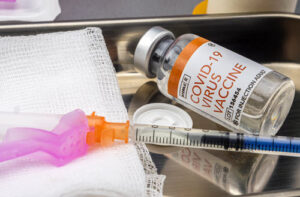Mass tort litigation has become a cornerstone of the legal landscape, addressing claims involving widespread harm from defective products, pharmaceuticals, environmental disasters, and more.
As 2025 unfolds, emerging societal trends, technological advancements, and regulatory changes will shape the mass tort environment.
This article explores key developments likely to influence major mass tort cases in 2025 and predictions for the industries and legal issues that will dominate the docket.
What is Mass Tort Litigation?
Mass tort litigation involves large groups of plaintiffs seeking damages for harm caused by a common defendant or set of defendants.
Unlike class actions, where plaintiffs are treated as a single entity, mass torts allow for individual claims to reflect varying degrees of harm.
Key Characteristics of Mass Torts
- Centralized proceedings, often through Multidistrict Litigation (MDL).
- Significant financial and reputational stakes for defendants.
- Complex causation and liability issues requiring extensive discovery.
Key Trends and Predictions for Mass Tort Litigation in 2025
The pharmaceutical industry has long been a focal point for mass tort litigation, and 2025 is no exception.
Increasing scrutiny on drug safety and medical device effectiveness will likely lead to a surge in cases.
Key Issues:
- mRNA Vaccine Litigation: Claims alleging adverse effects related to mRNA-based vaccines, including those used during the COVID-19 pandemic, may emerge as plaintiffs focus on long-term data.
- Opioid Litigation: While many opioid settlements have been finalized, unresolved cases and secondary litigation (e.g., claims against pharmacies and distributors) may persist.
- Defective Medical Devices: Class III devices like surgical implants and robotic surgical systems will face heightened scrutiny as device failures lead to high-profile injuries.
Prediction:
Expect regulatory actions by the FDA and new scientific findings to spark fresh waves of litigation against major pharmaceutical and medical device manufacturers.
If Robert F. Kennedy Jr. is confirmed as the new Trump administration’s Secretary of Health and Human Services, then expect an increased momentum on mRNA vaccine litigation.

Environmental mass tort cases are poised to stall as the new Trump administration is expected to reverse or eliminate policies that address climate change and industrial pollution.
Key Issues:
- PFAS (“Forever Chemicals”) Litigation: Claims involving per- and polyfluoroalkyl substances (PFAS) will likely dominate toxic tort dockets with claims involving aqueous film forming foam (AFFF) contamination becoming the most significant of these cases. Recent studies linking PFAS in AFFF to cancer and other illnesses have intensified lawsuits against chemical manufacturers.
- Water Contamination Cases: Contaminated water supplies, such as those involved in Camp Lejeune cases, will remain a focus as new sites of contamination are uncovered.
- Climate Change Liability: Corporations contributing to greenhouse gas emissions may face lawsuits from municipalities and states seeking to recover damages for climate change-related disasters.
Prediction:
Corporate lobbyists will likely gain favor with the Trump administration and delay or diffuse many of the pending or ongoing litigation against chemical manufacturers. However, it is more likely that the scope of injured plaintiffs will be significantly narrowed rather than eliminating litigation altogether.
Litigation against chemical manufacturers may intensify as plaintiffs employ creative legal theories to hold companies accountable for bodily harm towards consumers, particularly military veterans.
Consumer product claims, especially those involving emerging technologies, will see significant growth in certain categories and decline in others where lobbyists hold significant influence in the White House and Capitol Hill.
Key Issues:
- AI-Driven Product Liability: As artificial intelligence (AI) is integrated into consumer products, liability for harm caused by AI errors or bias is expected to generate novel legal disputes.
- E-Cigarette and Vaping Litigation: Claims of health harms caused by vaping products, particularly those targeting youth, will continue to proliferate.
- Electric Vehicle (EV) Defects: The rapid growth of the EV market has revealed safety issues, including battery fires and software malfunctions, which are likely to result in mass tort claims.
Prediction:
Mass tort litigation will expand into new areas involving tech-related consumer products, forcing companies to address uncharted legal risks. EVs are likely to see decreased pressure due to Elon Musk’s influence in the White House and plaintiffs are likely to have their cases delayed or dismissed.

Data breaches and misuse of personal information are driving mass tort claims under evolving privacy laws.
Key Issues:
- Biometric Data Litigation: Laws like Illinois’s Biometric Information Privacy Act (BIPA) are setting the stage for mass claims over unauthorized collection or use of biometric data.
- Health Data Breaches: Cyberattacks on healthcare providers and insurers may trigger claims alleging harm from exposure of sensitive personal data.
- AI Privacy Violations: Legal claims related to the misuse of AI for data collection or analysis without consent will likely grow.
Prediction:
With increasing regulatory focus on data privacy, companies across industries will face a rising tide of litigation over data security lapses. Big Tech’s influence on the Trump administration may, however, shield many of these corporations from significant liability.
Challenges and Opportunities in 2025
Challenges for Plaintiffs:
- Causation and Proof: Demonstrating a causal link between harm and exposure to a product or substance remains a significant hurdle.
- Statute of Limitations: Plaintiffs may struggle to bring claims in cases involving long latency periods, such as those related to toxic exposure.
- Class Certification: Securing certification in mass tort cases continues to be a complex process, requiring plaintiffs to prove commonality and predominance.
Challenges for Defendants:
- Reputational Risks: High-profile mass tort litigation can damage brand reputation and consumer trust, regardless of the ultimate outcome.
- Financial Exposure: Settlements and judgments in mass tort cases often reach billions of dollars, posing risks to corporate solvency.
- Regulatory Oversight: Defendants face additional scrutiny from agencies like the EPA, FDA, and FTC.
Opportunities for Resolution:
- Mass Settlements: Leveraging multidistrict litigation (MDL) frameworks can streamline resolution processes and reduce litigation uncertainty.
- Innovative Legal Defenses: Companies are exploring new defenses, such as preemption and regulatory compliance or changes, to counteract mass tort claims.
- Early Mediation: Engaging in early mediation or settlement discussions can mitigate financial and reputational risks for defendants.
Conclusion
Mass tort litigation in 2025 is expected to evolve in response to societal, technological, and regulatory shifts. From pharmaceuticals and environmental toxins to AI-driven products and cybersecurity breaches, the scope of mass torts will continue to expand; however, there will likely be liability caps and/or a narrowed scope of qualified plaintiffs as corporate lobbyists are expected to have a significant impact in the new Trump administration to reduce corporate liability.
For plaintiffs, this presents challenges to seek redress for widespread harm, while defendants may focus more of their time and energy on influencing the legal and regulatory landscape to mitigate liability. By understanding these emerging trends, stakeholders can better prepare for the challenges and opportunities ahead.
